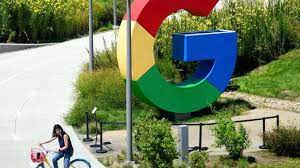Google has furthered its drive into AI-powered research tools by unveiling an AI system that would help scientists plan experiments and generate research hypotheses.
The AI Co-Scientist system, which is based on Google’s Gemini 2.0 model, enables researchers to express a scientific goal in natural language, the company stated in a blog post on Wednesday.
It then offers viable experimental strategies, reviews the published research, and makes testable hypotheses.
Read also: New memory feature lets Google’s Gemini AI Chatbot recall past conversations, queries
“AI Co-Scientist is a collaborative tool to help experts gather research and refine their work — it’s not meant to automate the scientific process,” the tech giant said. “We’re excited to see how researchers will use the system for their research.”
Google’s action coincides with the increasing use of AI in science, as organisations and businesses investigate how it may speed up advancements in fields like materials engineering, health, and climate science.
It is anticipated that the AI Co-Scientist system would help researchers generate new theories, especially in intricate domains like disease models and molecular biology. Google characterises the system as a helpful tool rather than a substitute for human expertise.
How the Google’s AI co-scientist works
The AI co-scientist is intended to produce original research ideas, a thorough study overview, and experimental protocols based on a scientist’s natural language-specified research goal. It accomplishes this by utilising a group of specialised agents that are motivated by the scientific method itself: Generation, Reflection, Ranking, Evolution, Proximity, and Meta-review.
Read also: Google Whisk, an AI-powered image remixing, now available worldwide
These agents create, assess, and improve hypotheses iteratively using automated feedback, producing a self-improving loop of ever-better and more inventive results.
The AI co-scientist uses tools such as web-search and specialised AI models to improve the quality and grounding of generated hypotheses, and the system is specifically designed for collaboration, allowing scientists to engage with it in a variety of ways, such as directly submitting their own seed ideas for exploration or giving natural language feedback on generated outputs.
A Supervisor agent oversees the AI co-scientist’s parsing of the given aim into a research plan configuration. Resources are distributed and the specialised agents are assigned to the worker queue by the Supervisor agent. In order to achieve the designated research aim, this design allows the system to iteratively enhance its scientific reasoning and flexibly scale computation.





Leave a Reply